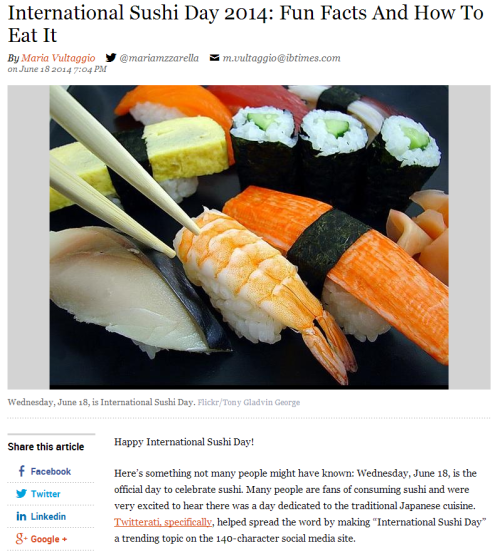When it comes to bite-sized delicacies, few dishes can get anywhere near the popularity of sushi. Between 2000 and 2005, U.S. consumption of these tasty morsels increased by 40%, and sushi restaurants now represent a $2 billion industry.
If you’re one of the many people who can’t get their fill of sushi, why not make your own rolls at home? Mikuni Japanese Restaurant & Sushi Bar, one of the best restaurants in Roseville, offers a few crucial tips to nascent sushi masters like you:
“Rice” to the Occasion
If sushi were a painting, rice would be its canvas. As such, Gourmet.com reminds newbie sushi makers to pay special attention to buying and preparing rice:
The single most important element of sushi-making is the cooking of the rice. It’s so important, in fact, that future sushi chefs in Japan spend the first two of their seven years of formal training learning to master this step. For the best shot at success, be sure to buy the right stuff: Japanese medium-grain sushi rice. A few of my favorite brands are Kokuho Rose and Nishiki, but you can also opt for Koshihikari Premium or Tamanishiki, all of which can be found in large supermarkets, specialty stores, or online. Whichever you choose, remember that the type of rice is more important than the brand: Do not attempt to make sushi with anything but sushi rice. Other types contain lower levels of amylose (the sugar found in rice grains) and will not achieve the required sticky texture.
Avoid Sticky Fingers
Sushi rice needs to be sticky in order to hold its signature shape. Unfortunately, the rice grains will also stick to your hands as you attempt to roll sushi, a challenge all sushi neophytes face. To prevent this problem, keep your hands moist at all times by keeping a bowl of water on hand. Whenever things get too sticky, just dab your hands into the water so you can handle the rice without trouble.
Don’t Overstuff!
Of course, the real stars of sushi rolls are the ingredients tucked inside. As delicious as the filling may be, though, resist the urge to stuff too much of it into your rolls (this applies to the rice as well). If you do, you won’t be able to roll the sushi all the way through; and if you somehow manage to, it will simply burst open, being overstuffed.
If you want to learn more pro-tips on sushi making, you can also take private sushiology classes care of leading restaurants in Roseville, CA like Mikuni Sushi. Through these courses, you can become a sushi master in your own right!
(Source: EIGHT GREAT TIPS FOR HOMEMADE SUSHI ROLLS, Gourmet.com, March 21, 2012)









